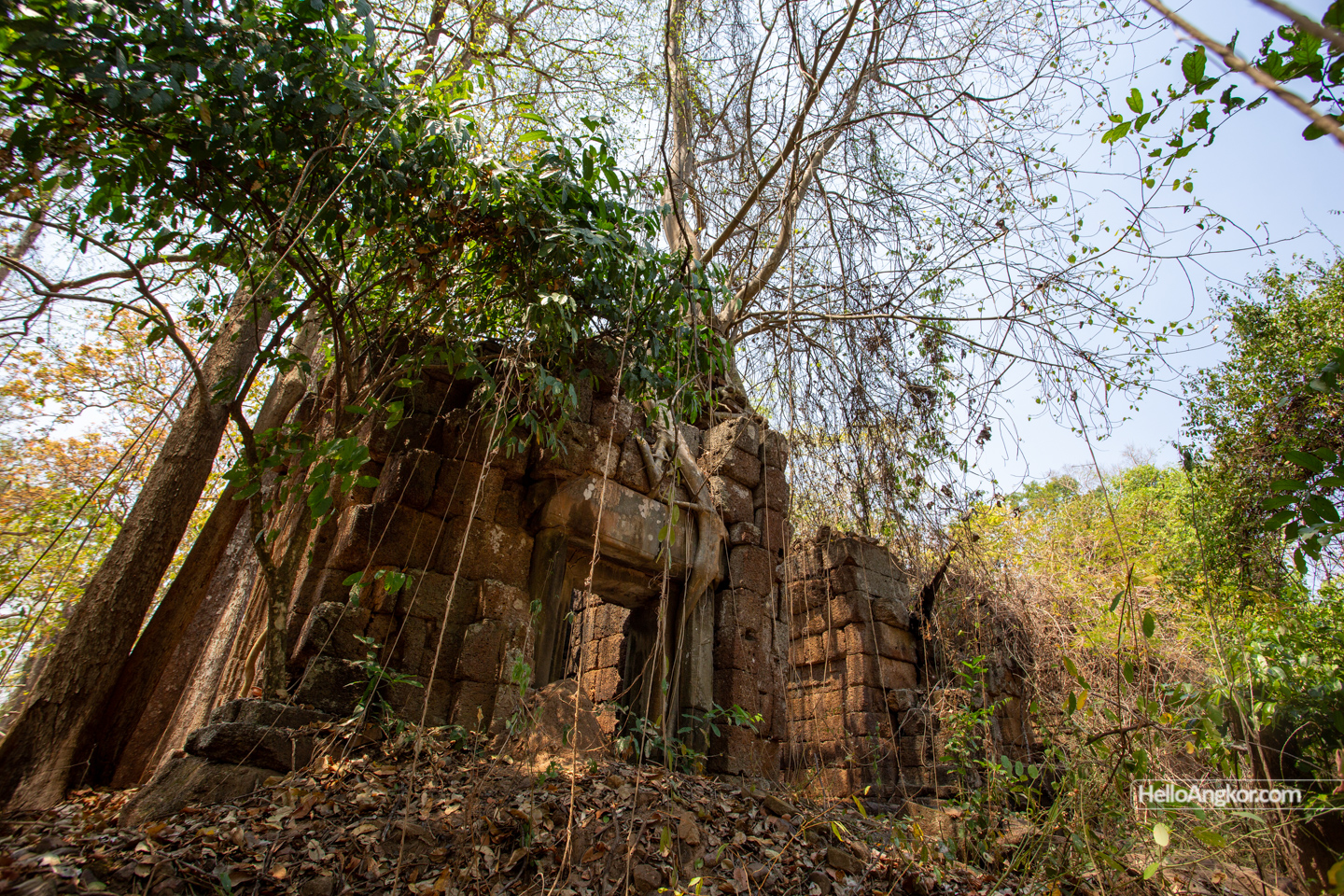- Area: Preah Vihear Province > Kuleaen District > Srayang Commune > Pra ôp Village
- | Type: Ancient Remains & Temples
Also known as Prasat Chhuk, it is situated to the north of Preah Khan of Kampong Svay and west of Phnom Tnoat and sits at the southern end of a large basin recorded as Trapeang Chhouk. It features three well-preserved laterite towers that are aligned on a north-south axis, opening to the east, and further surrounded by a moat. Whilst the body of the towers was constructed with laterite to a height just above the lintel, they would have originally had a brick superstructure completing the tower. Only a small trace of this brickwork remains in situ on the central tower. The outer towers have sandstone doorframes, door columns and lintels yet without receiving any final decorative work. The lintel, doorframes and columns of the central tower are not seen but may well be buried in the overgrowth.
According to historical notes, there were fragments of lintel/sketching depicting Indra, these were not seen and may also be still in the overgrowth. A statue of Brahma was also noted in the report by Aymonier in the late 1800s but noted as missing in the report by Lajonquire in the early 1900s.
The hydraulic system here, moat with a large basin in the east, and those in the wider area might be something of further interest also.
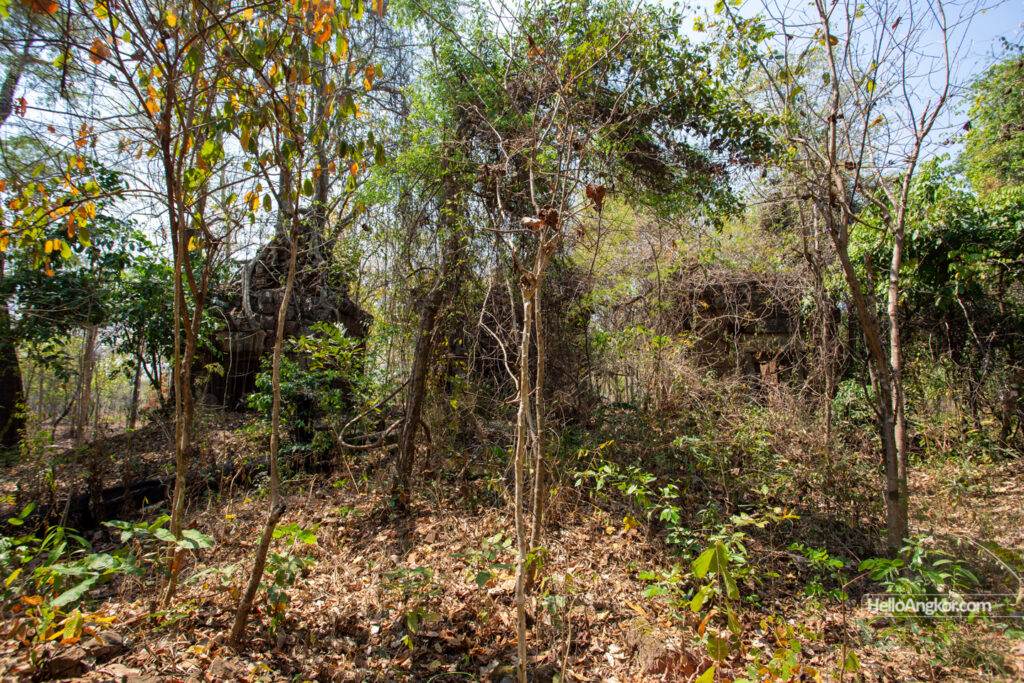




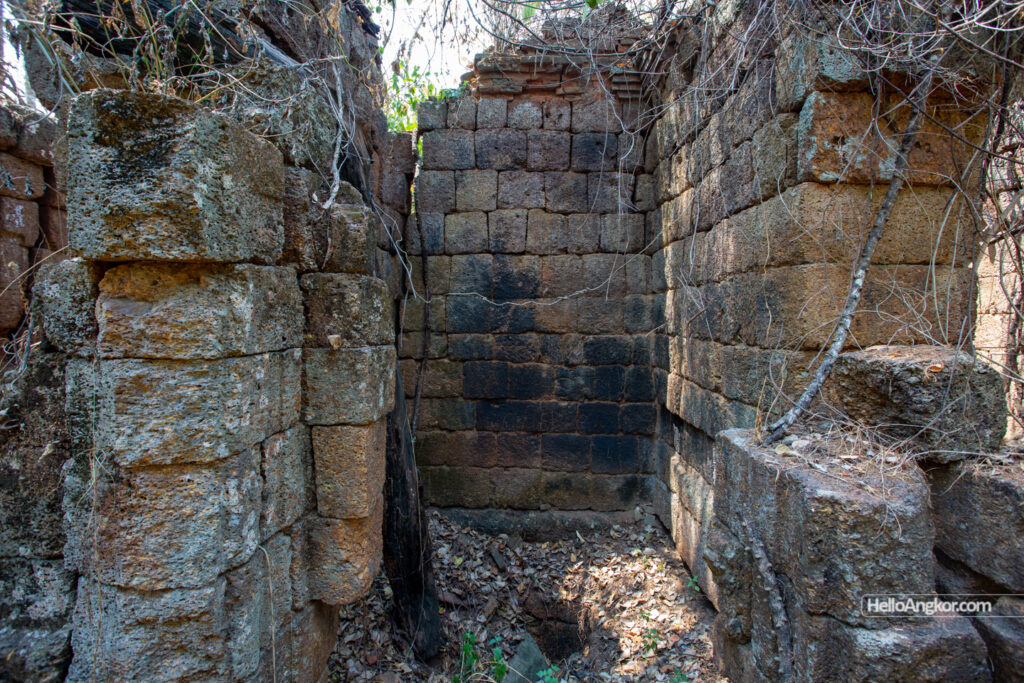

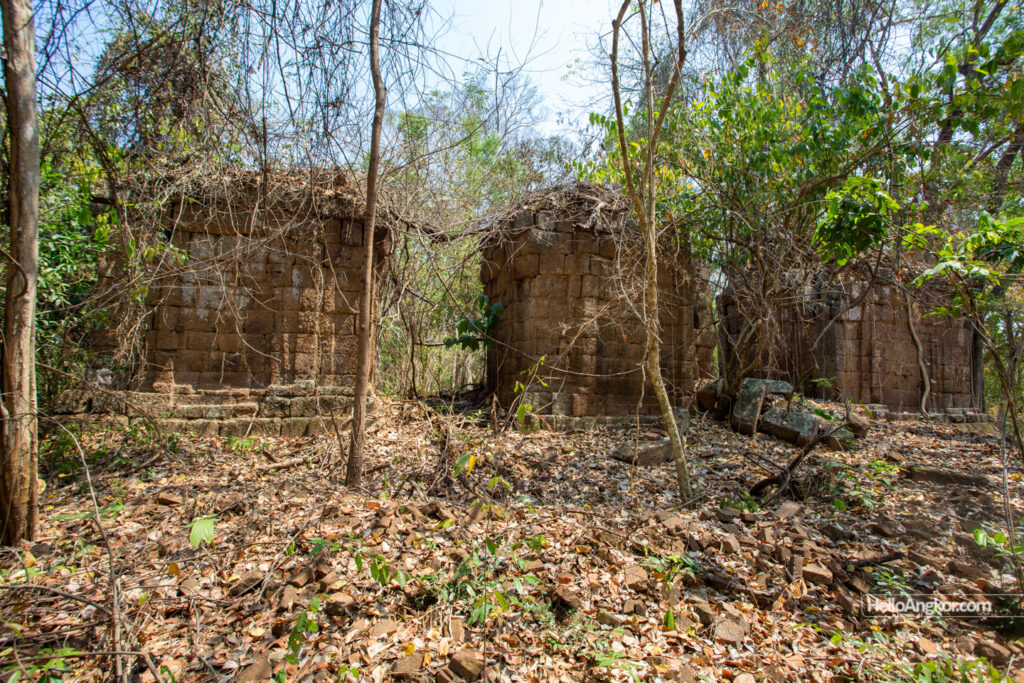


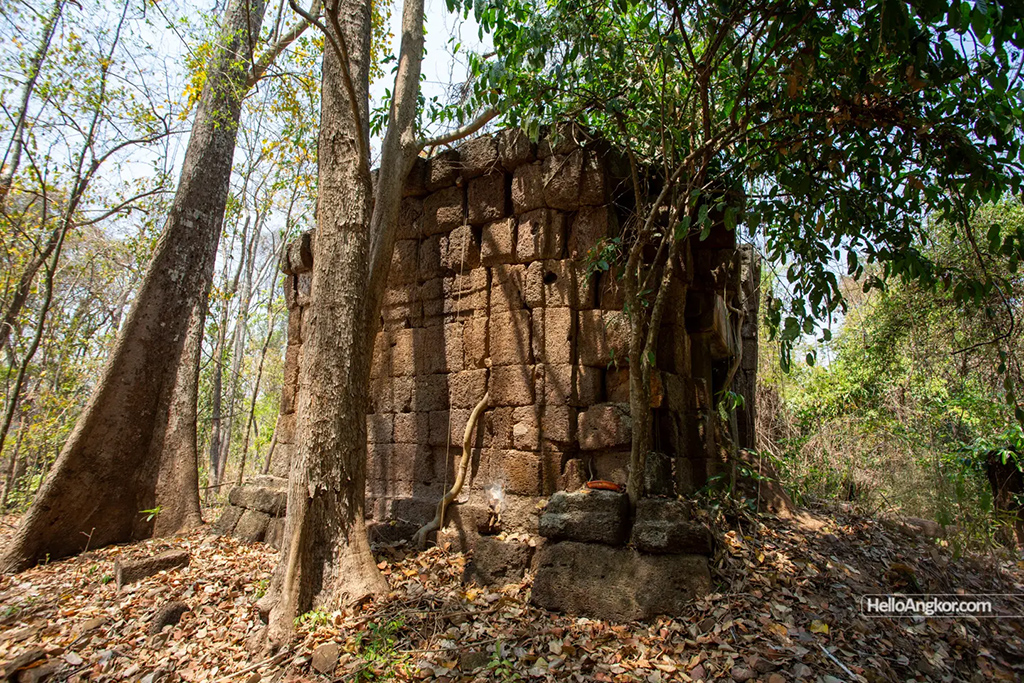
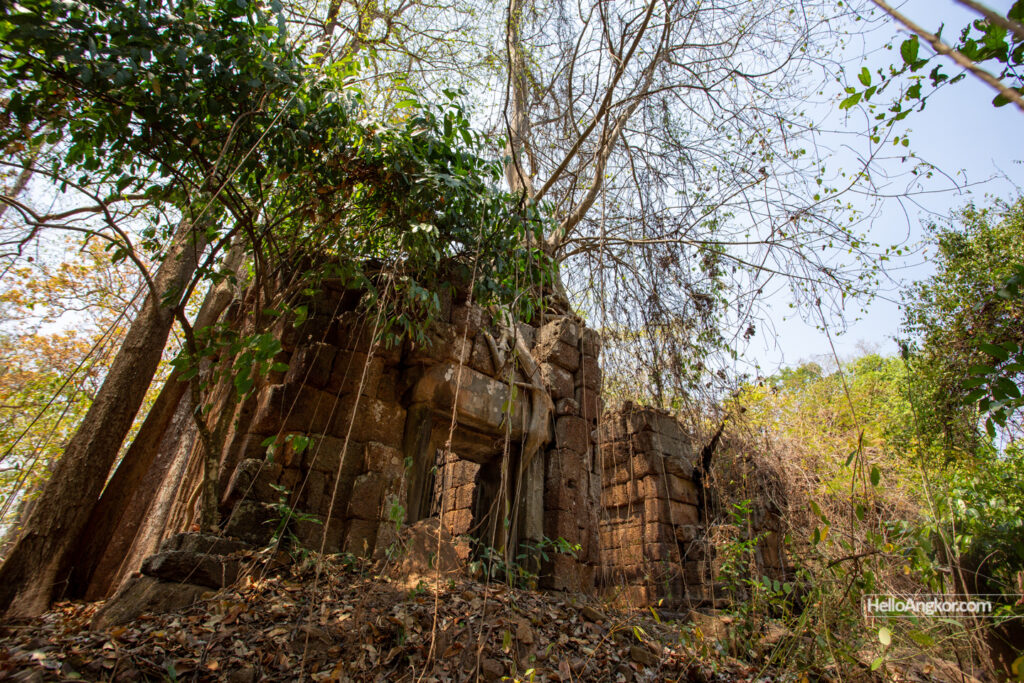
Historical Notes
Prasat Chhuk. This temple is located in the region between Phnom Merech and Phnom Tenot, about 2 kilometers north of Prasat Spean Chei (IK 237). It is of little more interest.
It is, in the middle of a rectangular basin which is still quite well drawn, an north-south of three limonite sanctuaries open to the east, without projecting bodies and measuring 4 meters on each side externally.
The vaults, which appear to have been established rather roughly. are made of bricks, partly collapsed. The doors are framed in sandstone with the ordinary ornamental device, sketched only in the north and south aedicules, in two fragments, type III with foliage. The central motif of the ornamentation of this lintel is formed by a figurine of Indra on the three-headed elephant: two half-length figures are born at the ends of the foliage ornaments.
M. Aymonier points out at this point a statue of Brahma which has disappeared.
We have not been able to indicate the group of Sré Sangké mentioned in the same chapter of his work and which would be located to the east; the natives currently designate by this name two monuments situated to the west. (see no. 241).
AYMONIER, Cambodge, 1, 413.
Inventaire descriptif des monuments du Cambodge, E. Lunet de Lajonquière, 1902
Map
Site Info
- Site Name: Chhouk (Pr.) Khmer Name: បា្រសាទឈូក
- Reference ID: HA11522 | Posted: January 18, 2021 | Last Update: March 3rd, 2023
- Tags/Group: pr, ra, T17, Temples
- Location: Preah Vihear Province > Kuleaen District > Srayang Commune > Pra ôp Village
- MoCFA ID: 233
- IK Number: 238

